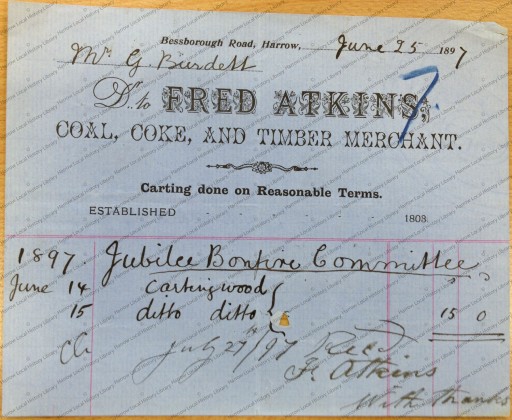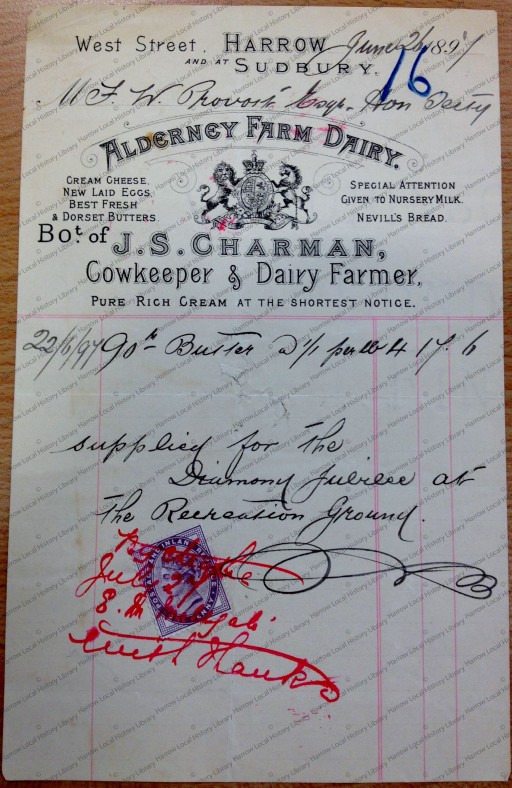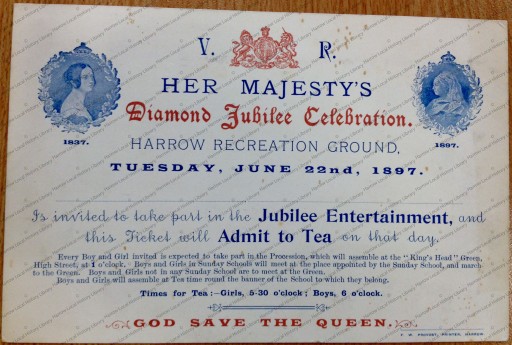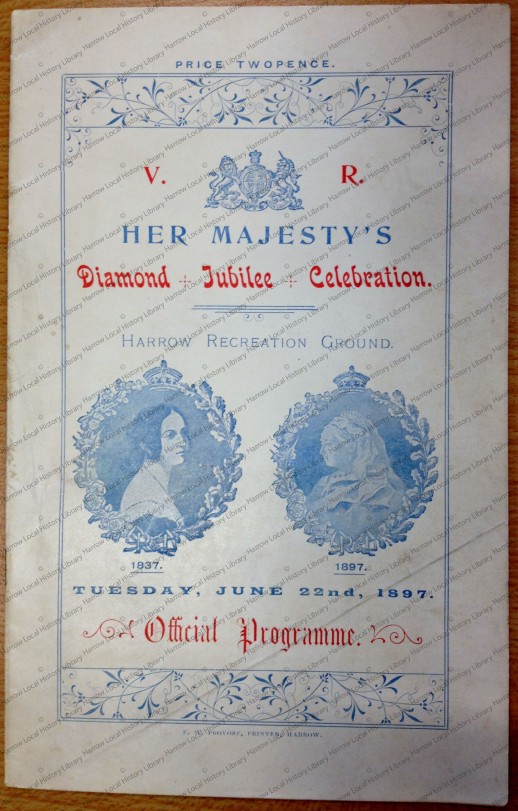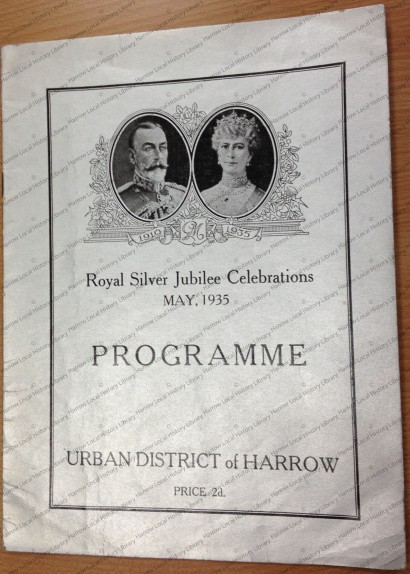From the Archives… A Right Royal Occasion – Celebrating the Jubilees
In the last few years it has felt impossible to escape Royal celebrations, as quickly as the bunting is taken down it goes straight back up for the next occasion: weddings, jubilees, coronation anniversaries even babies. We’ve had the lot. The souvenir tea-towel business has been in overdrive.
During the extensive media coverage of each occasion much attention has been placed on ‘the people’ and how ‘the people’ are wholly part of the celebrations of such occasions. The crowds that line the route of processions or camp for days outside Buckingham Palace, those who have travelled from across the country or even the world to be a part of such an event all adding to the occasions gravitas, the widespread appeal of being a part of an historic day. Such media coverage also serves to emphasise the support for the Monarchy and its relevance as an old institution in the modern day.
Both the Royal Wedding on April 29th 2011 and the Queens Diamond Jubilee in 2012 with a focus of events in June, provided the perfect opportunity for people all over the country and the world to celebrate the occasions in their own ways, without necessarily travelling to Central London to witness the events first hand. Street parties, village fetes, watching the television coverage with family and friends, celebrations organised by Local Authorities occurred all over the country and provided a way for ‘the people’ to become part of the day, each creating their own memories of individual experiences being part of a large occasion. Such events were again highly featured in the press, revealing a celebratory party atmosphere all over the country.
While some people may not have experienced such ‘Royal Fever’ sweeping the country before, others may remember previous Royal Weddings such as Prince Charles and Dianna Spencer in 1981 or Prince Andrew and Sarah Ferguson in 1986 or the Queens Silver Jubilee in 1977 and the Golden Jubilee in 2002. Often remembering the occasions through personal experiences such as attending parties or particular celebrations, possibly even the day off work as opposed to the exact details of the Royal ceremony; personal reminders of large nation and worldwide occasions.
The apparent want of a large part of the population to partake in such celebrations or organise their own ones reveals much about the place of the Monarchy within society. They are embraced as an important and relevant institution, something to be proud of and celebrated. Although it must be said that there is much Republic opposition to the Monarchy as well as a lot of indifference and mild annoyance of the blanket news covering they receive.
However it is the tale of the Modern Monarchy who made conscious efforts to take full advantage of innovations in the media to appear accessible and well known, in many ways a family, relatable to other families; rather than a removed institution with an elevated social and financial situation. This began with Queen Victoria and her appearances in the Illustrated Press then embracing new cameras and photographs, which would also be released to the general public and continued by George V who made the first ever Royal broadcast in 1932. Numerous other technological advancements were too taken advantage of such as the first televised Coronation procession of George VI in 1937, with cameras allowed inside Westminster Abbey to broadcast Queen Elizabeth II’s Coronation in 1953. Television was also made use of in 1957 when the Christmas speech was broadcast for the first time in 1957; in 2012 the Broadcast could also be viewed in 3D. There are now a vast variety of documentaries and television interviews which have been given over the years by the Royal Family and show how ‘down to earth’ and ordinary they are, further increasing their popularity and seeing the current Royals ingrained into society and daily life in general.
It would be interesting to know how the Monarchy would be received if they had not embraced new technologies and the media. Although the Royal Family have definitely not had a seamless relationship with the press and there are many questions about effect of their increasing media attention causing concerns regarding privacy and personal safety, the two are intrinsically linked.
Although people have their own separate reasons for wishing to celebrate and partake in Royal occasions, choosing to do so in different ways it is perhaps the Royal Family’s warmth and ability to feel you can relate to them that may encourage people to do so and be a part of as much a British national occasion as a Royal one.
Street parties and events organised by Local Authorities are traditions long associated with the celebration of Royal occasions. The Harrow Local History Library holds a large collection of books, documents and archival materials including back copies of newspapers, photographs, maps and electoral registers and much more. Included in this is a fascinating collection of materials regarding local celebrations of Royal Jubilees.
A large part of the collection is made up of bills, receipts, payments and records of donations from companies, business and shops around the area for the local celebrations of Queen Victoria’s Diamond Jubilee which were being held on the Harrow Recreation Ground on Harrow on the Hill.
The donations and bills cover a wide variety of produce and there was even a ‘Jubilee Bonfire Committee’ as the below receipt for “Carting wood” from Fred Atkins Coal, Coke, and Timber Merchant based on Bessborough Road reveals.
Another such example is from J. S. Charman, Cowkeeper and Dairy Farmer of the Alderney Farm Dairy who could be found in West Street and at Sudbury who has supplied butter. While such documents may seem mundane, the sheer amount of them that have been preserved in the archives detailing the wide variety of things donated or sold ranging covering everything imaginably necessary for such an event reveals the sheer scale of the Jubilee celebration. Equally the varying companies who were willing to donate or sell their goods says much about the community spirit at the time, the importance placed on the Royal celebration and the work which went into necessitating Harrow’s part in it.
Below is an invitation to the aforementioned Diamond Jubilee Celebrations to be held on the Harrow Recreational Grounds on Tuesday 22nd June 1897. Although the invitation is unnamed it is presumably for a child and details follow informing the invited that “Every Boy and Girl invited is expected to take part in the Procession, which will assemble at the ‘Kings Head’ Green, High Street, at 1 o’clock” the ticket will also admit them to “Tea” as well as “Jubilee Entertainment”.
The details of such “Jubilee Entertainment” can be found in the “Official Programme” of the day’s events. The detailed “Programme of Arrangements” begins sharply at 7am with Commemoration Bell Ringing from Church Bells across Harrow culminating in the National Anthem at 7:30.
At 10am there was a Horse and Cart parade when procedures began to fully take off at 1:30 with the Assembly of the Children, the presentation of commemorative Jubilee Medals to the children, the singing of the National Anthem and their procession to the Recreation Ground where “sports and amusements” would await them. The children’s tea began at 3:45 in the Pavilion and at 5:45 adults who had won competition or sporting events throughout the day were awarded their medals. A fun filled memorable day to celebrate the Diamond Jubilee.
The Recreation Ground was not the only place to celebrate in 1897. Pinner held their own celebrations, which started even earlier at 6.30am with a “large contingent” of Pinner locals leaving on an organised coach for London to witness the events in Central London. Throughout the day there was the similar ringing of Church Bells, singing of the National Anthem and awarding school children with commemorative medals and mugs and celebrations. In the park a fête was held with Punch and Judy shows, coco nut shell games, donkey rides and boat swings alongside an extensive sports programme throughout the day. Notably there was also a procession through featuring “Her Most Gracious Majesty Mrs. Smith” which was received with much laughter and applause! So much for the Victorians having no sense of humour and too much decency to dress up and pose as the Queen!
The next Jubilee would not occur until 1935 with the Silver Jubilee of King George V. In comparison to the singular day’s celebration of Queen Victoria’s Diamond Jubilee celebrations in 1935 were much larger and in Harrow extended over the entire week from 6th May – 12tt. The week began with Monday 6th May being declared a national public holiday and across London and the country fêtes, pageants and sporting events were held. In Harrow the days typically started with the ringing of Church Bells and at 11am the National Thanksgiving Service was broadcast from St Paul’s Cathedral to a gathering on the Grove Fields at the base of Harrow on the Hill.
The week continued with the holding of fêtes and fun days across Harrow much in the same way the previous Jubilee had been celebrated. Between the Tuesday and Wednesday Headstone Manor Recreation Ground, Byron Recreation Ground in Wealdstone, Harrow Weald Recreation Ground and Chandos Recreation Ground in Little Stanmore all held events with included sports, hoops, jugglers, conjurers, cycling performances, comedy and all the usual events that would be expected. Harrow’s celebration of the Silver Jubilee drew to a close with ceremonies of prayer and thanks giving held in churches across the district.
As well as large celebratory events an important aspect of the 1935 Jubilee Celebration was to ensure provisions were made for local unemployed and elderly people who were issued vouchers which could be exchanged for goods and foodstuffs. Gifts were also made to hospital patients, Harrow and Wealdstone, Pinner and Northwood hospitals each received gifts of eggs, fruit, books and souvenir caddies of tea and children patients were given toys and commemorative tins of biscuits. All children living in Harrow were also presented with Jubilee medals and children who attended schools in the district were also given a souvenir tin of toffees.
The archive collection contains some materials on the two Jubilees following 1935 showing the rise in popularity of street parties following the celebrations of Queen Elizabeth II’s coronations. The number of organized events and variety offered has also grown as with the awareness of people planning their own celebrations and parties.
While the archives provide a fantastic insight into the celebrations and what happened, aside from the mention of Mrs. Smith dressed up as Queen Victoria there feels like little personal input, individual experiences or remembrances which really make the day special. Of course the idea of this can be obtained from the archives and the reading of such collections makes it very easy to imagine (and it is rather difficult to record a feeling in an archive). However Remembering Harrow creates the opportunity to do just that! Have you celebrated any Royal occasions in Harrow? How did you celebrate the Jubilees of 1977, 2002 or 2012? Did you attend an organized fun day, street party, hold your own party?
If you’d like to share your own memories or experiences then please get in touch via the comments on this post, email: rememberingharrow@gmail.com or twitter: @harrowmemories
_______________________________________
With thanks to the Harrow Local History Library who permitted the reproduction of these images and kindly provided much help and assistance during an extremely busy time while preparing for their relocation to the Harrow Museum.
